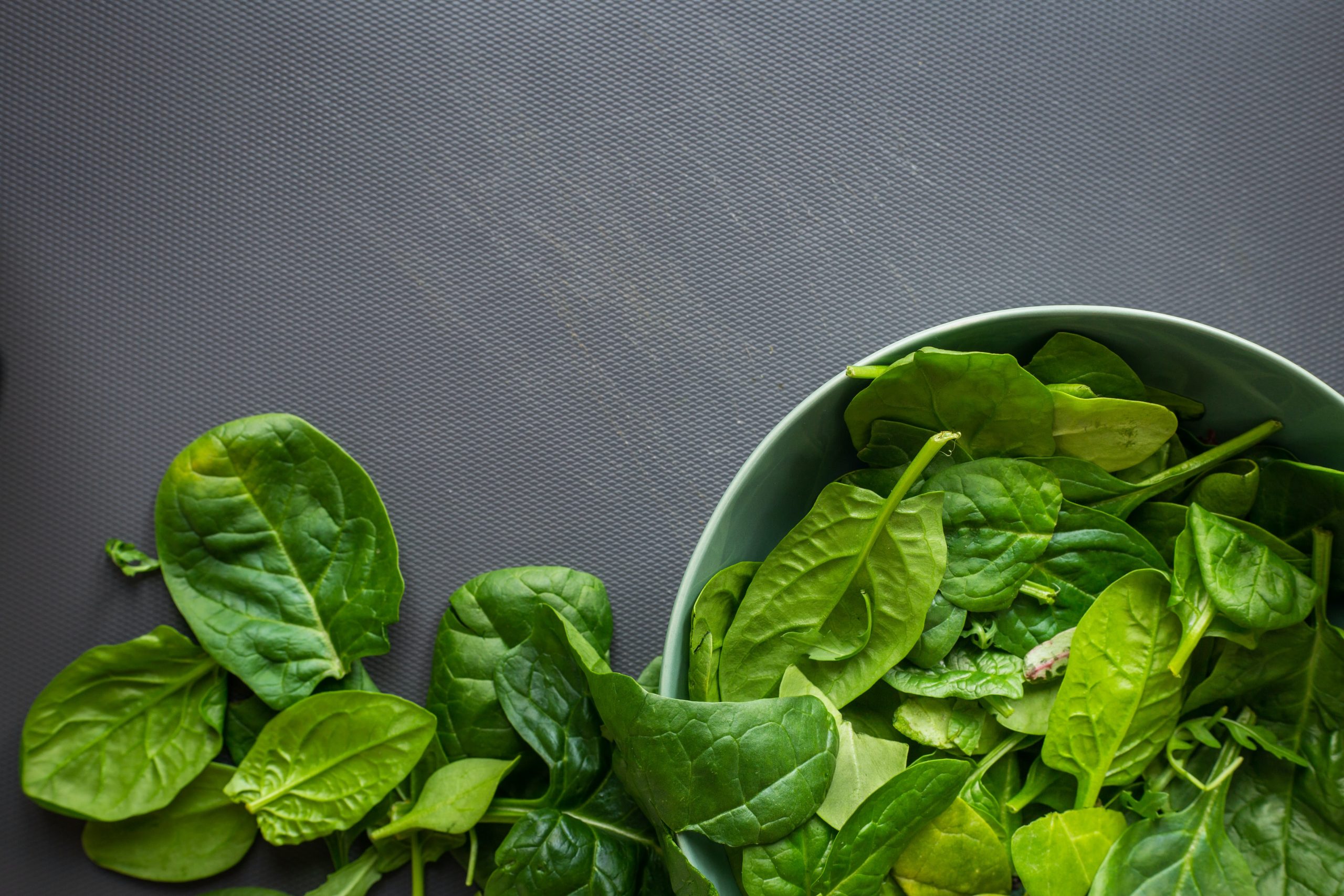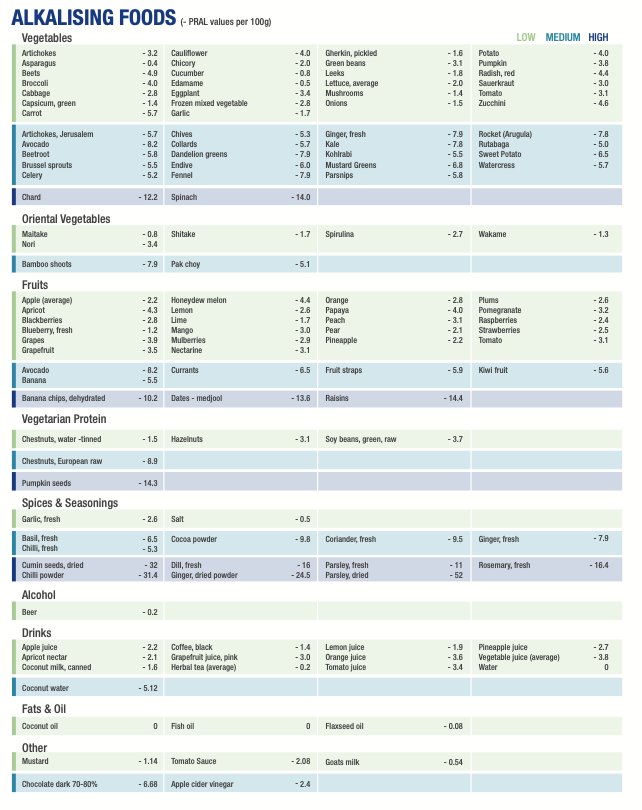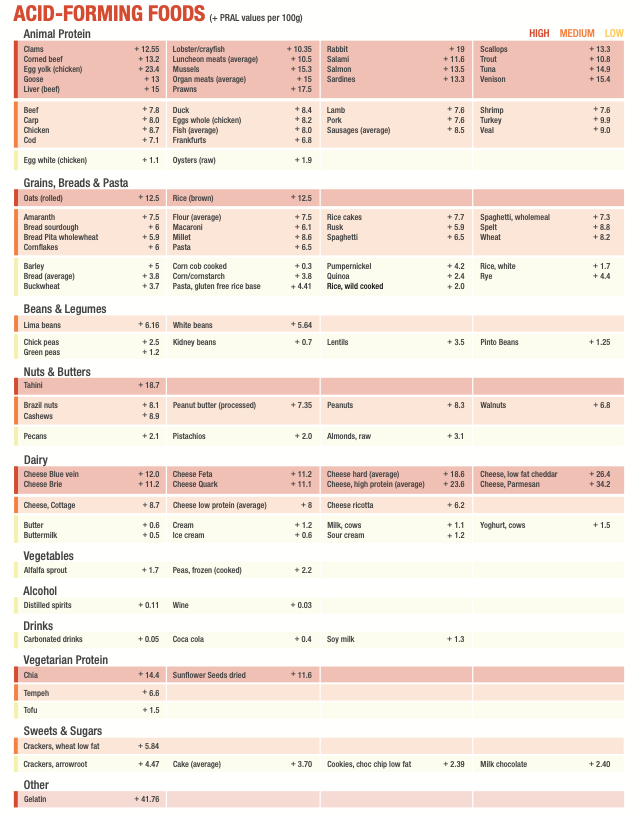


A CLINICAL GUIDE FOR ASSESSING DIETARY ACID LEVELS
All foods have an acidic or alkalising effect in the body, but it is crucial to know whether a patients’ diet is more acidic or alkaline overall, as latent acidosis is linked to chronic disease and ill health.
To understand the acidifying/alkalising nature of foods, the USDA (United States Department of Agriculture) developed a formula that calculates the acidifying effects of food when eaten, according to their levels of alkalising minerals and acidic producing proteins. Based on this formula, an easy reference table was produced that provides the potential renal acid load (PRAL) of many foods – the PRAL Table. By using the PRAL Table, it is possible to estimate whether the diet is overly acidic or more alkalising in nature, or in balance. Many scientific studies have validated the accuracy and usefulness of the PRAL Table in estimating the acidic load of any given diet.
The PRAL Table provides a unique tool for practitioners and patients to analyse potential dietary acid loads and take the appropriate steps to include more alkalising foods and supplements, if necessary. It is not a diet but a guide to the potential acid/alkaline balance of the diet.
The effects of an acidic diet
The Standard Australian Diet (SAD) produces an average of more than 100 mEq/day of acid but our bodies can only excrete 40-60 mEq/per day of acid. The kidneys process the majority of this acid load, which is why we refer to foods as having a potential renal acid load (PRAL).
Our net endogenous acid production, or NEAP, is made up of the foods we eat plus our metabolism. If we are eating a highly acidic diet, it will increase the NEAP and put an extra load on our acid buffering systems and the ability of our kidneys to excrete the acid.
The potential effect of a long-term imbalance in NEAP (i.e. more acid in than acid out) is a state of latent acidosis or chronic metabolic acidosis.
Guidelines to using the PRAL Table
• The PRAL Table is a guide to assess the general acidity/alkaline nature of someone’s diet; it is a not dietary plan. • Values listed on the PRAL Table are based on 100g of the food.
• Values can vary due to cooking methods, food variety, growing conditions and season.
Analysing a single meal
1. Calculate the total grams of each food.
2. Use the PRAL Table to calculate approximately how much acid that amount of that food is contributing.
3. To get the total PRAL value of the meal, add up all the acidic values, and then minus all of the alkaline values,
marked with a minus (-).
4. The final number is the approximate PRAL value of the meal. Please see the example below, which shows that overall this meal is
acidic (having an overall positive PRAL value) and could benefit from adding more alkalising foods, like fresh greens.
For example:
|
Food – Breakfast PRAL value per 100g Calculated PRAL value per serve |
|
2 (50g) eggs + 8.2 + 3.8 – 3.1 + 0.60 + 8.2 + 3.8 – 1.55 + 0.06 |
|
+10.51 TOTAL |
Analysing the diet from multiple meals
1. Gather a food diary over a set period of time.
2. Note down which column each acid food falls under on the PRAL Table (very high to low acid forming).
3. Then note down which column each alkalising food falls under on the PRAL table (low to very high alkalising).
4. Generally, analyse the acid forming food amounts against the PRAL Table, which is based on 100 grams, to find an approximate PRAL value. Add up your estimated PRAL total for the acidic foods.
5. Generally, analyse the alkalising food amounts against the PRAL Table, which is based on 100 grams, to find an approximate PRAL value. Add up your estimated PRAL total for the alkalising foods (ignore the minus at this stage).
6. Now minus the alkalising foods PRAL value total from the acidic foods PRAL value total to get the overall general acid or alkaline levels of the diet. This is the approximate PRAL level of the diet, over the set time period.
A balanced diet should be approximately 1/3 acid and 2/3 alkaline forming foods and drinks.
Remember an acid-forming food is not a bad choice. Choose an acid-forming food as your main protein source, then balance it out with a greater selection of alkaline foods.

